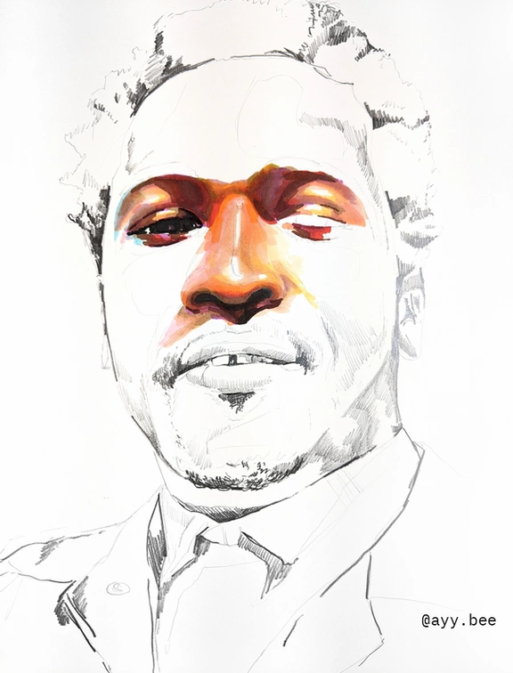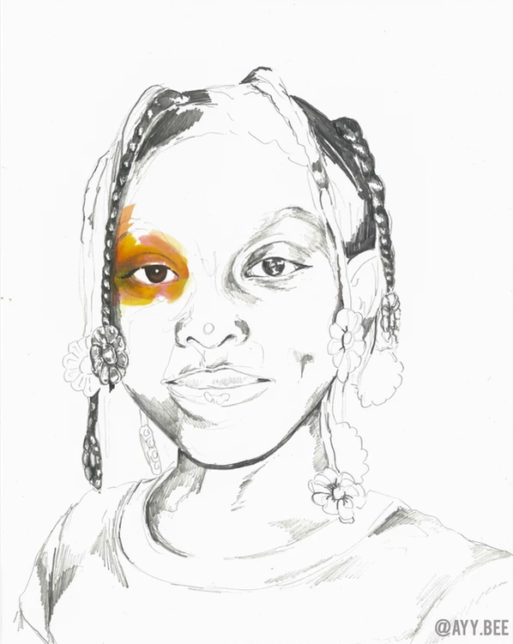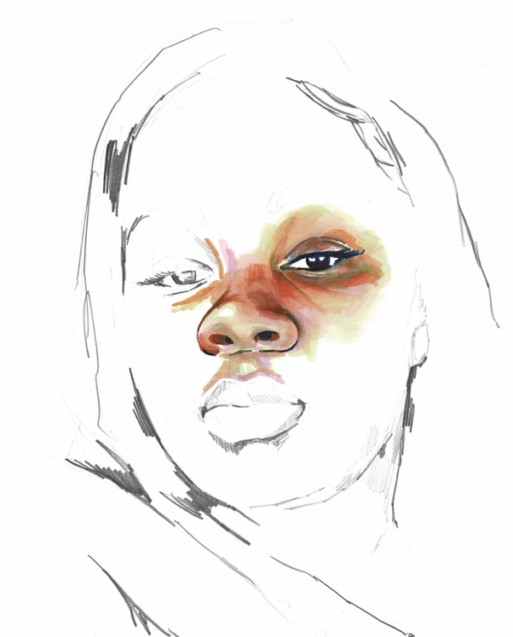
A portrait of Rayshard Brooks by Adrian Brandon (27 years, 27 minutes of color)
At first glance, the portraits in Adrian Brandon’s “Stolen” appear to be works in progress. His detailed pencil sketches depict faces young and old, smiling and somber, with small splashes of color that make it seem as though the artist ran out of time — which, in fact, he did.
That’s because Brandon times himself when he colors these portraits, allowing only one minute for every year of the subject’s life. These are the faces of the Black men, women, and children lost to police violence in the U.S. over the past several years. For some, the timer stops before it reaches 10 minutes.

A portrait of Aiyana Stanley-Jones by Adrian Brandon (7 years, 7 minutes of color)
While Brandon’s unique process adds another dimension to “Stolen,” the images speak for themselves. The portraits have all the realness and fluidity of casual photos, each face captured in some fleeting moment in which life still surrounded them in its fullness. The empty lines surrounding blooms of color suggest both interruption and erasure.
At times, creating these portraits can be emotionally grueling for Brandon. “I want so badly to color in as much as I can … when the timer goes off there’s anger, deep sadness, and a sense of hopelessness,” he told MyModernMet.
Brandon’s portraits of young victims such as Tamir Rice and Aiyana Stanley-Jones are particularly heartbreaking, with minimal color hinting at futures unfulfilled. Even the adults in “Stolen,” however, are mostly silhouettes. After all, even in our 30s, 40s, 50s, and beyond, we are hardly finished pieces.

A portrait of Breonna Taylor by Adrian Brandon (26 years, 26 minutes of color)
Adrian Brandon’s “Stolen” has served as a means of remembrance and honor for those who have lost loved ones, but his portraits have also provided a simple yet powerful message that has sparked conversations around racism and police violence. “I want the viewer to see how much empty space is left in these lives, stories that will never be told, space that can never be filled,” he wrote on his website. “This emptiness represents holes in their families and our community, who will be forever stuck with the question, ‘Who were they becoming?’”

 Adrian Brandon’s “Stolen” Honors Victims of Police Violence
Adrian Brandon’s “Stolen” Honors Victims of Police Violence


 How Dare You Die Now!
How Dare You Die Now!
 Debating Medical Aid in Dying
Debating Medical Aid in Dying
 “Help Me, Helen”
“Help Me, Helen”














